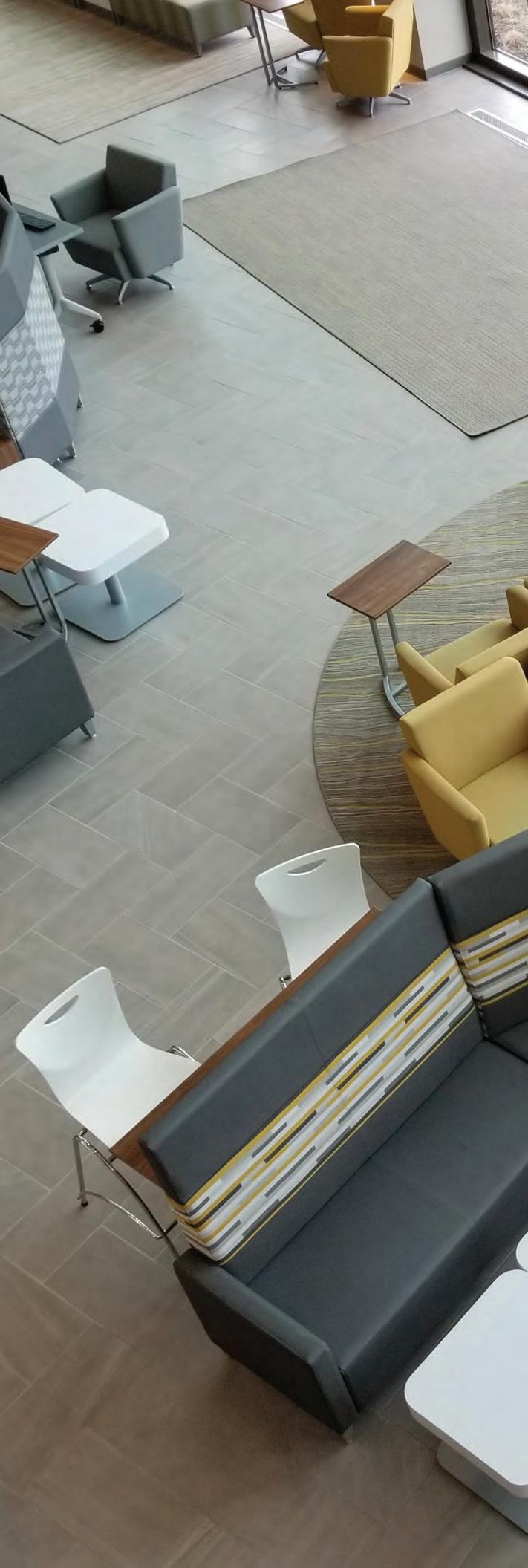
3 minute read
Realising the ESTEAM Dream
School leader Meg Fargher explains how a chance meeting at a conference helped her draw up an ambitious campus development plan to make a South African private school fit for the future.
After heading up St Mary’s School for girls in Johannesburg for the first decade of the twenty-first century, I found myself leading Somerset College in the Cape winelands. Both are excellent private schools that cater to the economically privileged. At St Mary’s I’d been asked to help develop an older, but lovely, school into a space that honoured the potential of young women. When I moved to Somerset College as the first female head, I encountered some scepticism that a woman could run a co-educational school. There were also some other old-fashioned attitudes among stakeholders.
Agreeing to make classrooms fit for purpose
Somerset College had a sound educational base, but I believed adding the Cambridge International Examinations (CIE) to the South African Independent Examination Board (IEB) curriculum would provide a necessary academic boost.

While the college enjoyed exquisite and expansive views of mountains and vineyards, the classrooms had low ceilings and small windows with restrictive outlooks. There was also a shortage of classrooms, and introducing the CIE exacerbated the problem: tempers were as hot as the dry Cape summers as teachers fought over space. A few minor building operations eased the situation but added to the problem of an already incoherent campus layout.
Simultaneously, after numerous academic discussions about being relevant for the digital age, teachers indicated the need for flexible learning spaces for science, technology and art. After a few iterations at strategy sessions, the school board challenged me to deliver on my proposal.
It was a massive challenge, especially when dealing with the daily demands of headship, a recalcitrant old guard, a lack of money (I’d inherited a serious deficit in the budget), an endless list of needs and some buildings that were not fit for purpose.
In this cyber-physical world children need to have space to think about what technology means for their own personal humanity.



Energised by Michál Cohen’s vision
Fortunately, a board member, Nicky Newton-King, and I attended an Independent Schools’ Association of South Africa heads’ conference where we listened to an inspiring lecture by Michál Cohen (editor of this issue) from the UK architectural practice Walters & Cohen. I managed to drag Michál back to Somerset College campus that afternoon. Although she lives in the UK, I urged the new, dynamic Somerset College board to meet her during her next visit. Michál’s deep knowledge around educational spaces captivated the board and they agreed to engage her to draw up a campus development plan (CDP). She understood ratios and won the finance people over by talking return on investment and cost to company.
Working with Michál energised the majority who had bought into the vision of making Somerset College an iconic destination school, relevant for Africa and beyond.

Entrepreneurship, Science, Technology, Engineering, Art and Maths (ESTEAM) Centre

While developing the CDP, Michál’s philosophy of including all stakeholders generated a palpable energy for the future. One aspect of the strategy, which now became entrenched in the CDP, was the building of a centre for Entrepreneurship, Science, Technology, Engineering, Art and Maths (ESTEAM Centre). We had a number of rationales:
• There are not enough people in South Africa properly skilled to manage the demands of the new digital economy.
• Solution-finding and critical thinking have become inextricably linked to being able to model outcomes and code concepts.
• Robotics will become an inevitable aspect of many jobs, and it is essential for young people to know how to code if they are to flourish in the digital space. Every aspect of the building’s design needed to be intentional and transformative. The inner workings of the building are exposed so pupils can understand how a building works. Typically, privileged children turn on a tap, or switch on a light without having to think of the source of these marvels. At least now they could see some of the ingenuity that lies hidden behind the plaster.
IF YOU’RE A MEMBER OF A4LE
If you’re a member of A4LE Europe, you’ll get a print copy of this magazine as part of your membership.
If you’re a member of A4LE in another region then you’ll receive an e-journal version of this magazine free of charge.
If you’d like a print version, it’s available for the reduced rate of £30 a year.
IF YOU’RE NOT A MEMBER OF A4LE
Subscriptions are available from £30 a year for three editions, published during the Spring, Summer and Autumn school terms.
Europe £30
Rest of the World £45
Send us an email with your name and address and we’ll do the rest! magazine@planninglearningspaces.com










